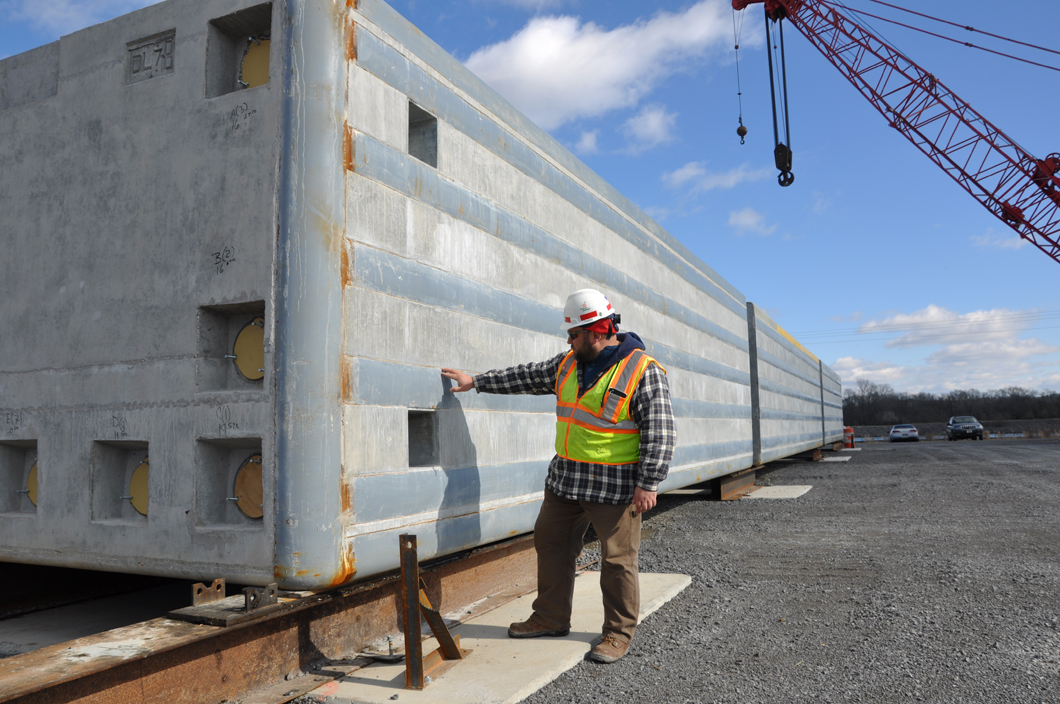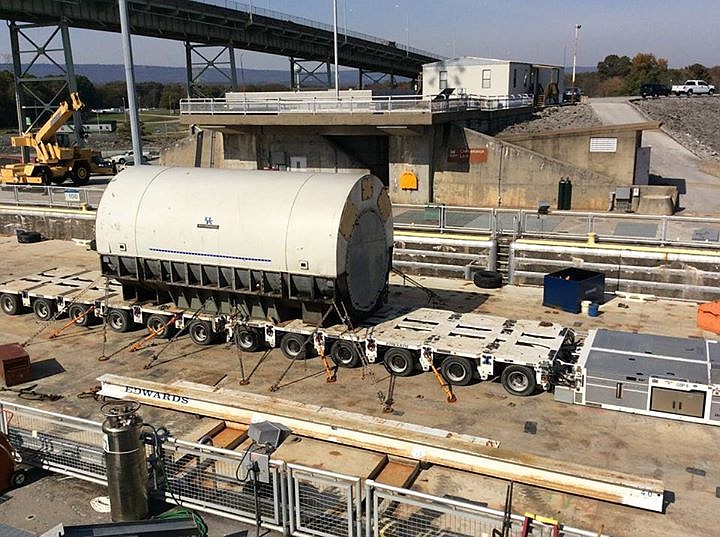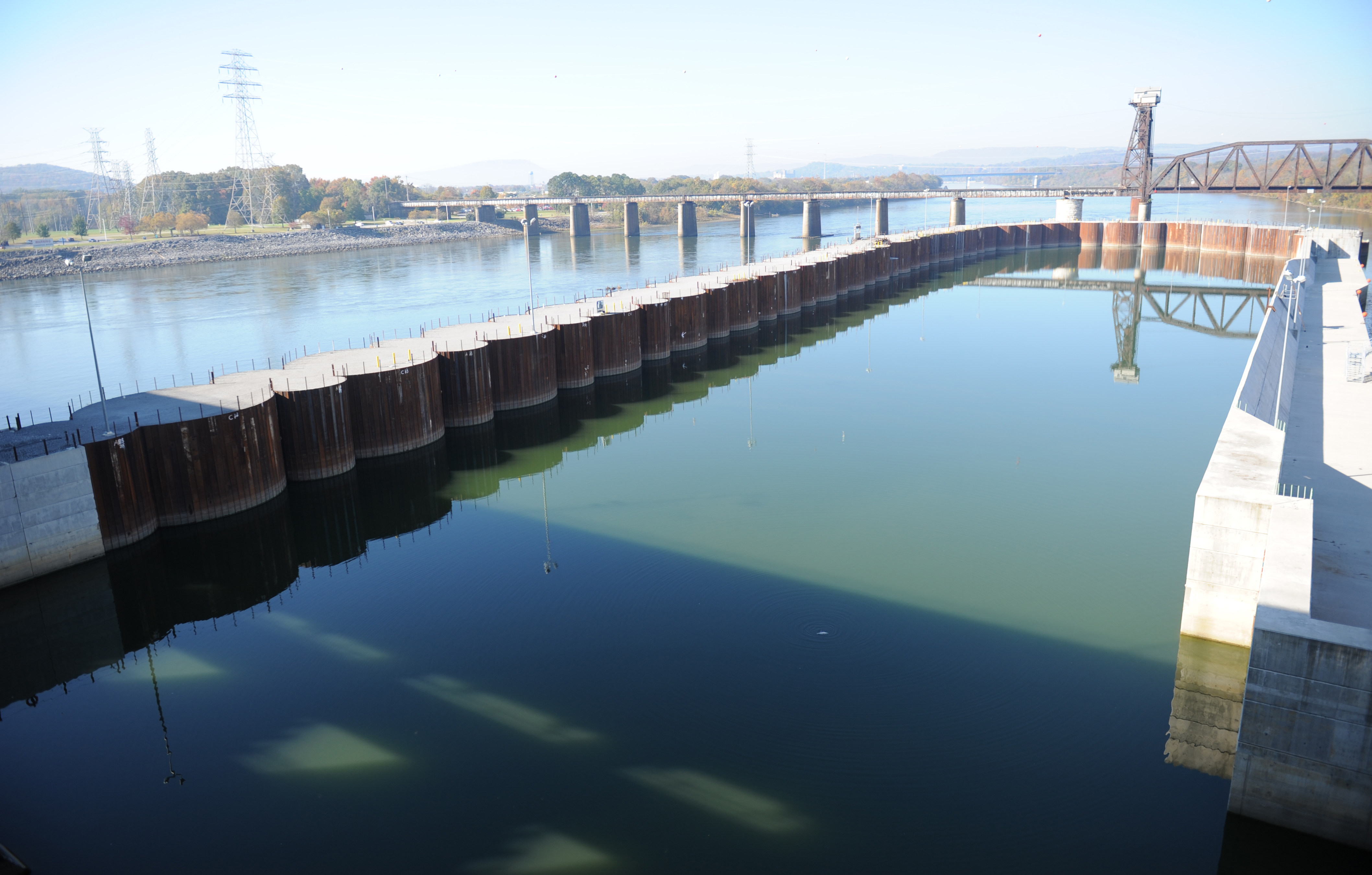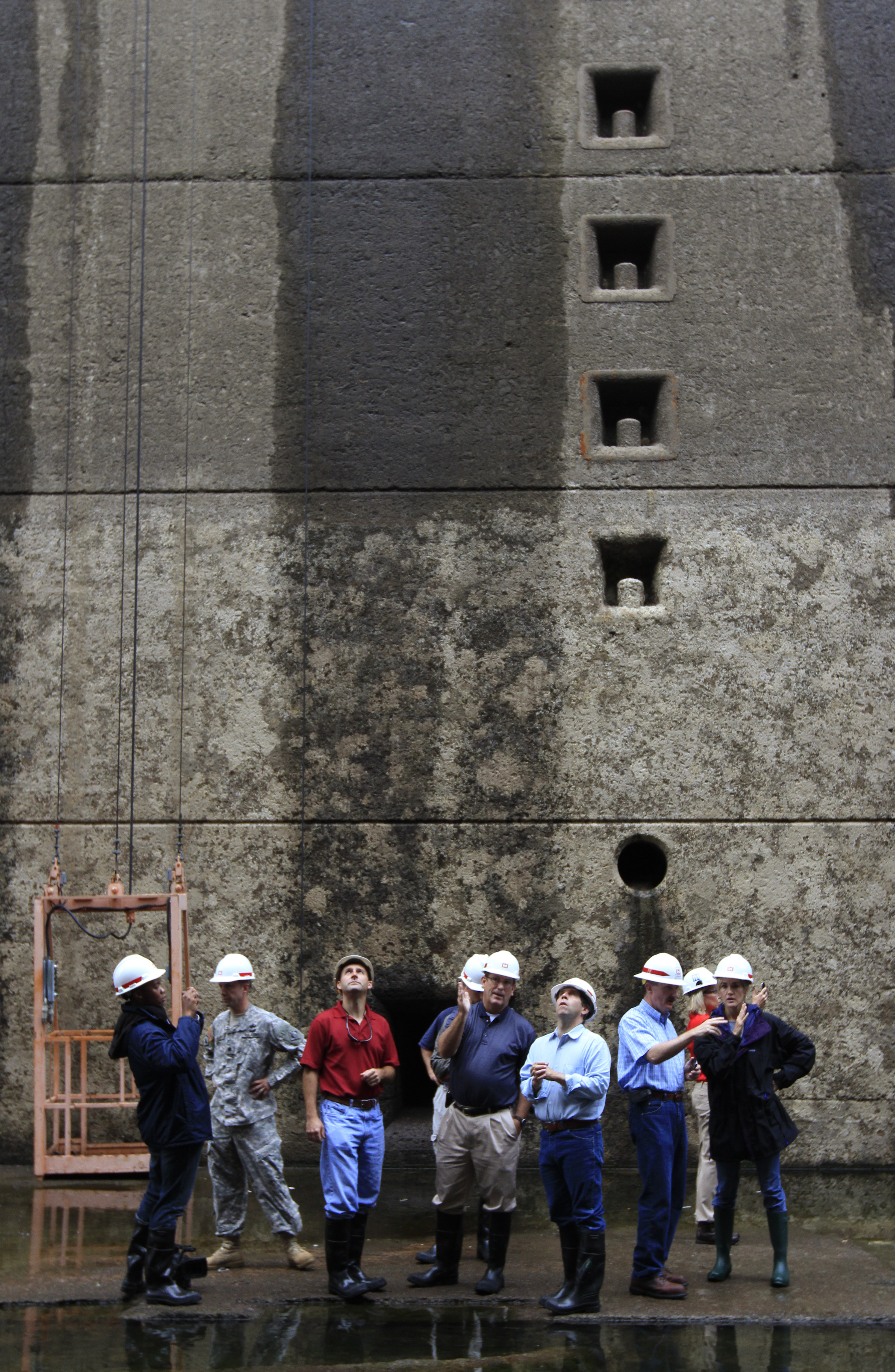 Mike Arles, quality assurance representative on the Chickamauga Lock Replacement Project, checks one of the pre-cast concrete sections of an approach wall beam Jan. 31 at Watts Bar Dam near Decatur, Tenn. The beams are being assembled and stored at Watts Bar for placement in the Chickamauga Lock Replacement Project when required for construction.
Mike Arles, quality assurance representative on the Chickamauga Lock Replacement Project, checks one of the pre-cast concrete sections of an approach wall beam Jan. 31 at Watts Bar Dam near Decatur, Tenn. The beams are being assembled and stored at Watts Bar for placement in the Chickamauga Lock Replacement Project when required for construction.The Senate Water and Energy Subcommittee chaired by U.S. Sen. Lamar Alexander, R-Tenn., unanimously approved a spending plan today that should make enough money available for some work to restart on a new and bigger Chickamauga Lock in fiscal 2016.
"One of the most important steps in this package is to provide good funding for our ports, locks and dams," Alexander said. "The good news for Tennessee is that $29 million will be available in October to restart work on the Chickamauga Lock."
The Corps has spent more than $180 million on the Chickamauga Lock over the past decade to design and start work on a lock to replace the existing 65-year-old chamber. But funding for the new lock ran out three years ago when most of the money in the Inland Waterways Trust Fund was absorbed by the $3 billion repair and construction of the Olmsted Lock and Dam on the Ohio River, which has a higher priority for completion than does the lock in Chattanooga.
The Army Corps of Engineers, which is building the new Chickamauga lock, estimates that the cost of finishing the new lock could cost another $680 million and take about four to five years of construction.
To revive stalled waterway projects and replenish the waterways trust fund, Congress approved an industry-backed 9 cents-per-gallon fuel tax increase last year and is moving to appropriate more money for the Corps' civil works projects this year.
Elsewhere in Tennessee, Alexander said major Department of Energy work in Oak Ridge should be boosted in the fiscal 2016 budget plan working through the U.S. Senate.
The U.S Department of Energy's Office of Science, which supports basic energy research, is funded at $5.144 billion ion the Senate bill, the highest level of funding it has ever received in the bill.
Advanced computing, which supports the new Summit supercomputer at Oak Ridge National Laboratory, is funded at $620.9 million. Once again, the world's fastest next-generation supercomputer will be at Oak Ridge National Laboratory, Alexander said.
The Uranium Processing Facility at the Y-12 National Security Complex is funded at $430 million, which will continue to keep this project on time and on budget.
Another $62.5 million is provided to continue to move forward with the development of Small Modular Reactors, which Alexander said will give utilities and the military the ability to generate nuclear power with new, smaller and safer designs.


